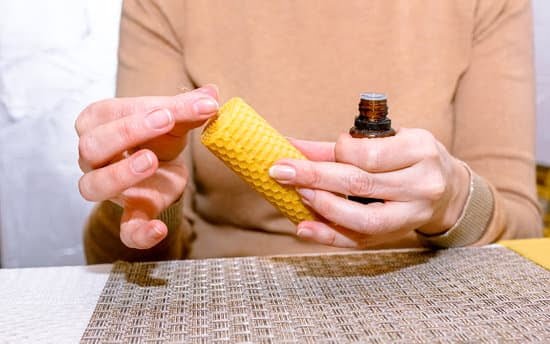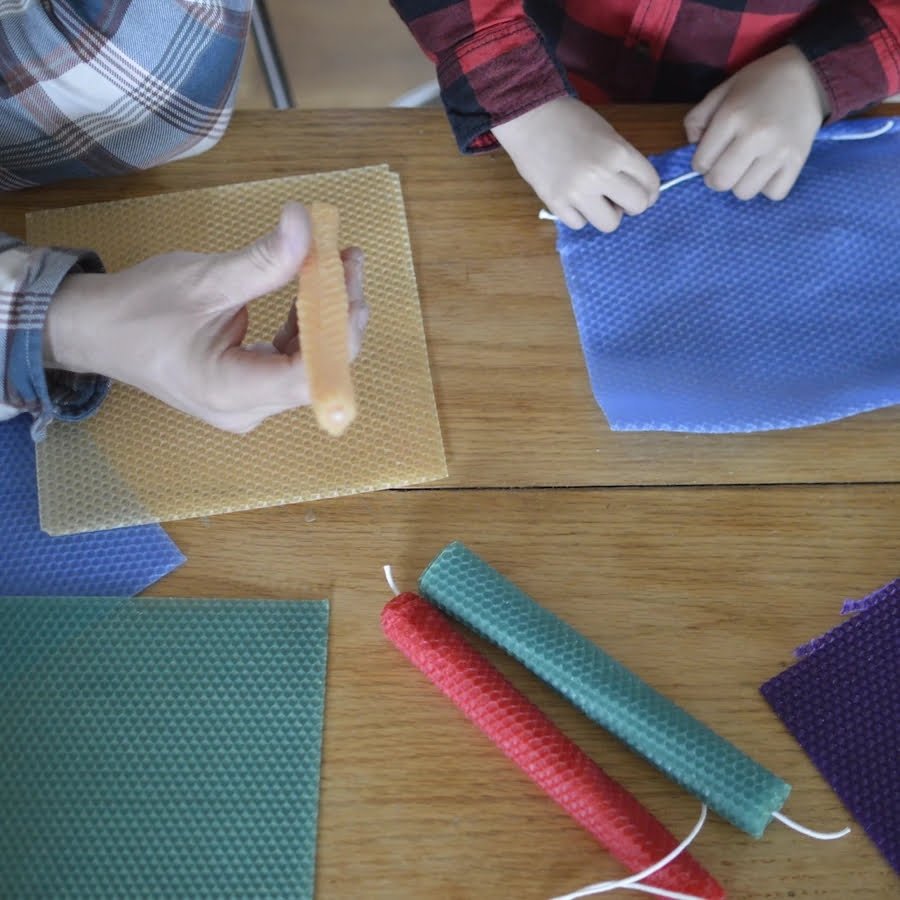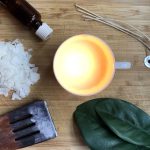Can making candles make you sick? This is a question that many candle enthusiasts may have never considered. However, the potential health risks of candle making are worth exploring. From the materials used to the chemicals involved, there are various factors that can impact your health when making candles.
When it comes to candle making, it’s important to be aware of the potential dangers associated with the materials and chemicals involved in the process. This includes everything from fragrance oils and dyes to waxes and additives. Understanding these risks is essential for promoting health and safety in candle making.
In this article, we will delve into the common symptoms of candle making related illnesses, explore the effects of chemical exposure on respiratory health, and discuss safe practices for minimizing risks. Whether you’re a hobbyist or a professional candle maker, it’s important to prioritize your well-being while indulging in this creative pursuit.
The Potential Dangers of Candle Making Materials
While candle making can be a fun and rewarding hobby, it is important to be aware of the potential dangers associated with some of the materials used in this craft. One common concern is the use of paraffin wax, which is derived from petroleum.
When paraffin wax is burned, it releases harmful chemicals such as toluene and benzene into the air. These chemicals have been linked to respiratory issues and can be especially harmful to individuals with asthma or other respiratory conditions.
Another material often used in candle making is fragrance oils, which can also pose health risks if not used properly. Some fragrance oils contain phthalates, which are known to disrupt hormone levels and cause allergic reactions in some individuals. Additionally, the dyes and colorants used in candles can also contain harmful chemicals that may release toxins when burned.
It’s important for candle makers to be mindful of the materials they are using and opt for safer alternatives whenever possible. For example, choosing soy wax or beeswax instead of paraffin wax can significantly reduce the emission of harmful chemicals during burning. Similarly, opting for fragrance-free or naturally scented candles can help minimize the risk of exposure to potentially harmful substances.
| Material | Potential Danger |
|---|---|
| Paraffin Wax | Release of harmful chemicals such as toluene and benzene |
| Fragrance Oils | Contain phthalates that can disrupt hormone levels and cause allergic reactions |
| Dyes/Colorants | May contain toxins that are released when burned |
Common Symptoms of Candle Making Related Illnesses
When engaging in the activity of making candles at home, it is important to be aware of the potential health risks associated with this craft. While candle making can be a fun and creative hobby, it is essential to understand the common symptoms that can making candles make you sick. One of the primary concerns is the exposure to harmful chemicals present in candle making materials, which can trigger allergic reactions and cause respiratory issues.
One common symptom of candle making related illnesses is respiratory irritation. This can manifest as coughing, wheezing, shortness of breath, or chest tightness. The inhalation of fumes from fragrance oils, dyes, and waxes used in candle making can irritate the respiratory system, leading to discomfort and potentially more serious health issues over time if not addressed properly.
Other symptoms can include skin irritation or rashes. Contact with certain candle-making materials may lead to skin sensitivity or allergic reactions in some individuals. It is important to pay attention to any changes in skin condition after handling candle making supplies, as these symptoms could indicate an underlying problem that needs to be addressed.
In addition, headache or dizziness can also occur as a result of exposure to toxic chemicals during candle making. Many fragrances and dyes contain volatile organic compounds (VOCs) that can cause headaches and lightheadedness when inhaled. These symptoms should not be ignored and seeking medical attention if they persist is crucial for maintaining good health while partaking in this hobby.
| Common Symptoms | Potential Causes |
|---|---|
| Respiratory Irritation | Inhalation of fumes from fragrance oils, dyes, and waxes |
| Skin Irritation or Rashes | Contact with certain candle-making materials |
| Headache or Dizziness | Exposure to toxic chemicals such as volatile organic compounds (VOCs) |
Chemical Exposure and Respiratory Health
When it comes to candle making, there are potential health risks associated with the use of certain materials and chemicals. These risks can have a direct impact on respiratory health, especially for those who may already have pre-existing conditions such as asthma or allergies. It’s important to understand the potential dangers and take necessary precautions to minimize any negative impact on your health.
Effects of Chemical Exposure
The process of making candles often involves the use of fragrance oils, dyes, and waxes that contain various chemicals. These chemicals can release harmful fumes when heated and may result in respiratory issues for individuals who inhale them regularly. Prolonged exposure to these fumes
Minimizing Exposure
To reduce the risk of chemical exposure and respiratory issues related to candle making, it is essential to work in a well-ventilated area. Using a fan or opening windows can help dissipate fumes and improve air quality.
Additionally, wearing protective gear such as gloves and a mask while handling candle making materials can provide an extra layer of defense against inhaling harmful substances. Lastly, choosing natural and non-toxic ingredients for your candles
Understanding Allergies and Sensitivities
Candle making can be a fun and creative hobby, but it’s important to be aware of the potential health risks associated with this activity. Understanding allergies and sensitivities is crucial for ensuring that candle making is a safe and enjoyable experience for everyone involved. Here are some key points to consider:
- Allergens in Candle Making: Many of the materials used in candle making, such as fragrance oils and dyes, can contain allergens that may trigger allergic reactions in some individuals. For example, synthetic fragrances and dyes can contain chemicals that may cause skin irritation or respiratory issues for those with sensitivities.
- Sensitivities to Chemicals: Some people may have sensitivities to certain chemicals commonly used in candle making, such as paraffin wax or certain types of essential oils. These sensitivities can manifest as skin rashes, headaches, dizziness, or other symptoms when exposed to these substances.
- Precautions for Individuals with Allergies and Sensitivities: It’s important for individuals with known allergies or sensitivities to carefully read ingredient labels and choose candle making materials that are free from allergens and irritants. Additionally, using proper ventilation and personal protective equipment can help minimize the risk of adverse reactions during the candle making process.
By understanding allergies and sensitivities related to candle making, individuals can take proactive measures to minimize the risk of experiencing negative health effects while engaging in this hobby. It’s crucial to prioritize safety and well-being when working with potentially allergenic or irritating materials. If you suspect that candle making may be impacting your health negatively, seeking medical attention is always recommended.
Safe Practices for Candle Making
Using Quality Ingredients
When it comes to candle making, the quality of the ingredients used can have a significant impact on the health and safety of the process. Using high-quality waxes, fragrances, dyes, and other materials not only ensures better final products but also reduces the potential risks of exposure to harmful chemicals. Look for reputable suppliers that provide detailed information about their products and prioritize natural, non-toxic options whenever possible.
Proper Ventilation
One of the most important safety practices for candle making is ensuring proper ventilation in your workspace. Most candle making materials release fumes and particles that can be harmful when inhaled over extended periods. Setting up a well-ventilated area with windows or exhaust fans can help minimize exposure to these potentially hazardous substances. Additionally, wearing a mask designed to filter out fine particles can offer extra protection while working with candle making materials.
Personal Protective Equipment
To further minimize the health risks associated with candle making, consider using personal protective equipment (PPE) such as gloves and goggles. These items serve as an additional barrier between your skin and eyes and any potentially harmful substances found in candle making materials. While PPE alone may not completely prevent illness or injury, it can significantly reduce the likelihood of adverse health effects from exposure during the candle making process.
By following these safe practices and being mindful of potential health hazards, individuals
Seeking Medical Attention for Candle Making Related Illness
It is important to recognize the potential health risks that can arise from making candles, as exposure to certain materials and chemicals can lead to various health issues. While candle making can be a fun and fulfilling hobby, it is crucial to prioritize safety and take proactive measures to protect your health. In some cases, individuals may experience symptoms related to candle making that require medical attention.
Here are common symptoms that could indicate the need for medical attention:
- Persistent coughing or wheezing
- Skin irritation or rashes
- Difficulty breathing or shortness of breath
- Nausea, dizziness, or headaches
If you experience any of these symptoms after engaging in candle making activities, it is important to seek medical attention promptly. Ignoring these warning signs can making candles make you sick may lead to more serious health issues and complications.
In addition, it’s important to be open and transparent with your healthcare provider about your candle making activities. Provide details about the materials and chemicals you use, as well as any potential exposure you may have had. This information will help your healthcare provider make an accurate diagnosis and recommend appropriate treatment options.
Conclusion
In conclusion, it is important to recognize the potential health risks associated with candle making. While it can be a fun and creative hobby, the materials and chemicals involved can pose dangers to our health if proper precautions are not taken. From irritations and allergies to respiratory issues, the hazards of candle making should not be underestimated.
To minimize the risk of illness from candle making, it is crucial to carefully select and use safe materials and ingredients. This includes opting for natural waxes and fragrance oils, as well as wearing protective gear such as gloves and masks when working with potentially harmful substances. Additionally, ensuring good ventilation in the workspace can help reduce exposure to hazardous fumes.
Ultimately, promoting health and safety in candle making requires diligence and awareness of potential risks. By prioritizing safe practices and seeking medical attention if symptoms of illness arise, enthusiasts can continue to enjoy this hobby while minimizing the likelihood of developing any adverse health effects. Always remember that your well-being should never be compromised for the sake of a creative pursuit.
Frequently Asked Questions
Can Candle Fumes Make You Sick?
Candle fumes can indeed make you sick, particularly if they contain toxic chemicals or irritants. Inhaling these fumes can lead to symptoms like headaches, dizziness, nausea, and even respiratory issues.
What Are the Risks of Making Candles?
There are several risks associated with making candles. These include the potential for burns and fires due to working with hot wax and open flames. Additionally, handling fragrance oils and dyes can expose you to skin irritation or allergic reactions.
Why Do I Feel Sick After Making Candles?
Feeling sick after making candles could be attributed to the chemicals present in the materials used. The fragrances, dyes, and even the paraffin wax itself can release harmful fumes when heated, leading to symptoms like headaches, dizziness, or nausea. It’s important to work in a well-ventilated area and use proper safety precautions when making candles.

Welcome to my candle making blog! In this blog, I will be sharing my tips and tricks for making candles. I will also be sharing some of my favorite recipes.





